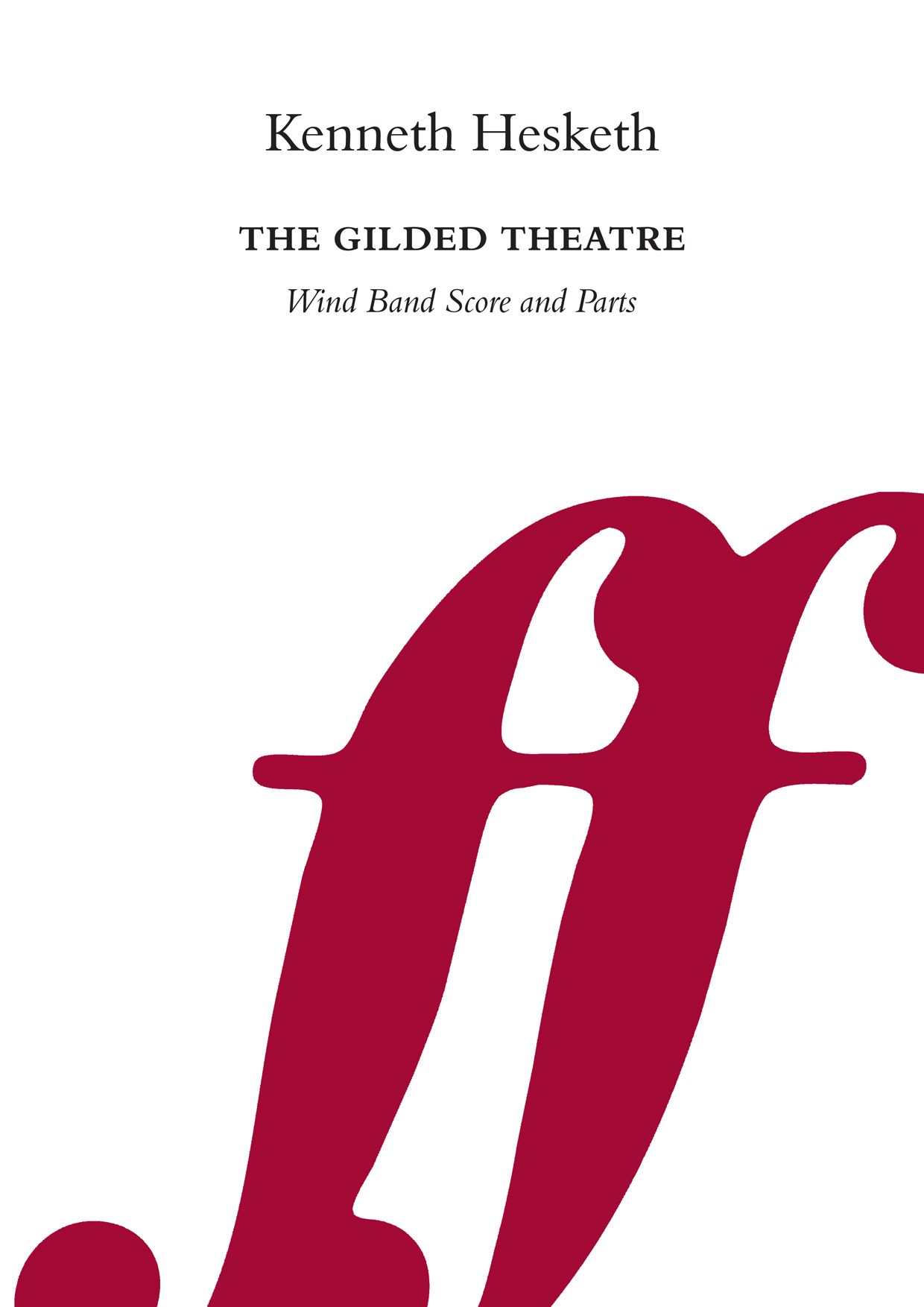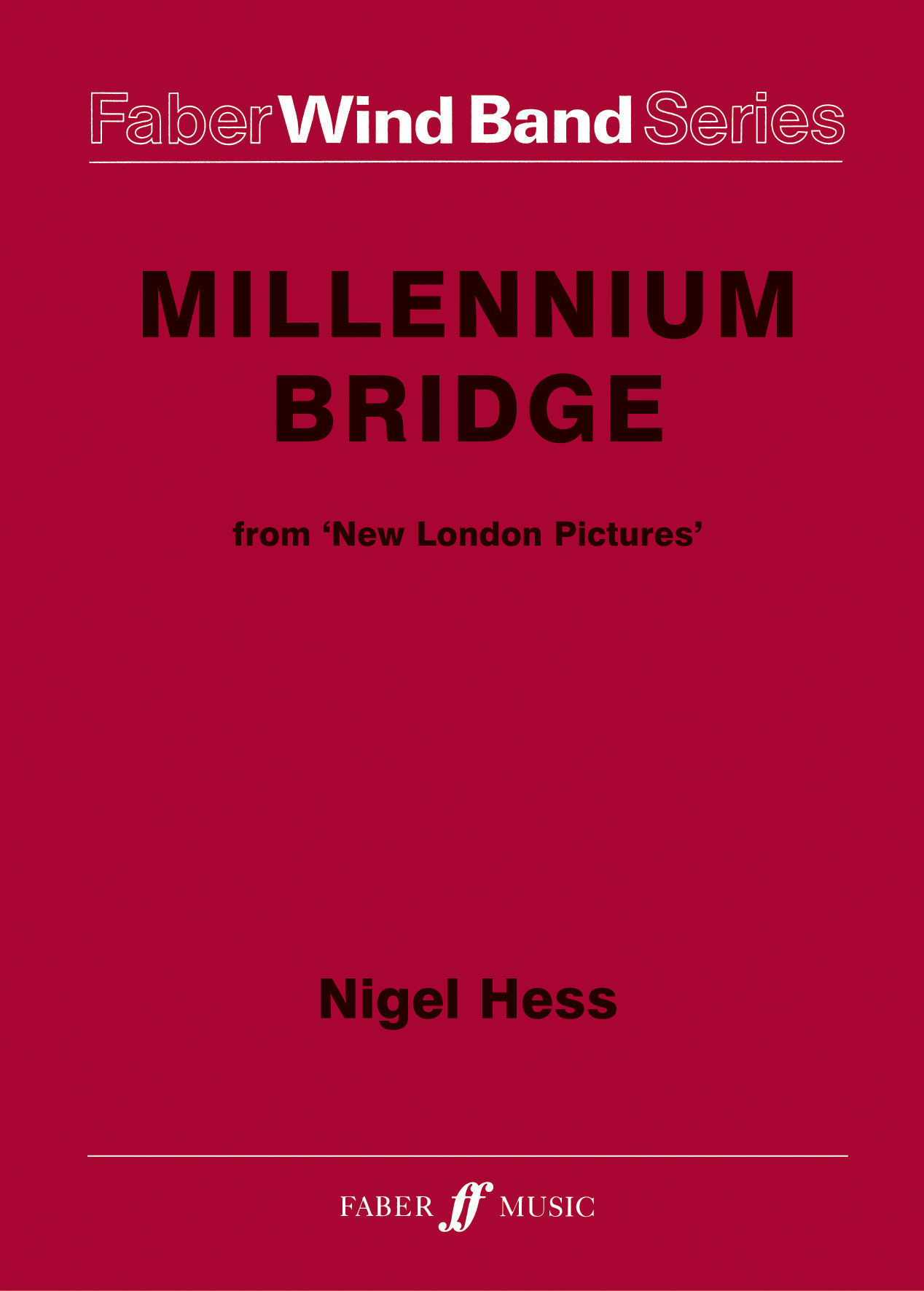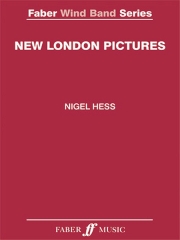Results
-
 £84.99
£84.99Wachet Auf! - Felix Mendelssohn Bartholdy
This excellent arrangement by Robert van Beringen is of the well-known German chorale Wachet auf, ruft uns die Stimme, taken from the oratorio Paulus (St. Paul) by Felix Mendelssohn Bartholdy (1809-1847). Although accredited to Mendelssohn it is thought the melody was in fact written by the pastor and poet Philipp Nicolai in 1599. Robert van Beringen's arrangement perfectly captures the biblical story of St. Paul.
Estimated dispatch 7-14 working days
-
£13.95
Dancing & Drumming
1Dancing and DrummingSusato/BertoffThe Central Band of the Royal Air Force2.262OvationMartin EllerbyThe Central Band of the Royal Air Force2.523Night and DayCole PorterThe Central Band of the Royal Air Force2.364Pineapple PollSullivan/MackarrasThe Central Band of the Royal Air Force5.555St. Louis BluesW.C. HandyThe Central Band of the Royal Air Force3.396Minstrel Boy/Toss the Feathersarr. WiffinThe Central Band of the Royal Air Force5.427Merry Wives of WindsorNicolai arr. GodfreyThe Central Band of the Royal Air Force5.428Woodchoppers' BallBishop & HermanThe Central Band of the Royal Air Force2.569MarschMarcel WenglerThe Central Band of the Royal Air Force3.1910Tiptoe TuneIrwin BertoffThe Central Band of the Royal Air Force3.4611Duel of the FatesJohn WilliamsThe Central Band of the Royal Air Force4.1412Royal Hunt of the SunMartin EllerbyThe Central Band of the Royal Air Force4.3413Music of the NightLlord Webber, Hart & StilgoeThe Central Band of the Royal Air Force4.2314Semper FidelisSousaThe Central Band of the Royal Air Force2.4415BoleroRavelThe Central Band of the Royal Air Force8.49
Estimated dispatch 7-14 working days
-
£13.95
Festival of Music 2002
1Here's a Health unto Her MajestySavile arr. Rob WiffinThe Massed Bands of the Royal Air Force3.312Elizabethan SerenadeRonald BingeThe Massed Bands of the Royal Air Force3.143Trumpet Tune and AirPurcellThe Massed Bands of the Royal Air Force2.274Haba?eraBizet arr. Rob WiffinBernadine Pritchett with The Massed Bands of the Royal Air Force4.365Finale: The Sword and the CrownEdward GregsonThe Massed Bands of the Royal Air Force4.156Berceuse from The Dolly SuiteFaur? arr. Rob WiffinThe Massed Bands of the Royal Air Force2.577633 SquadronRon GoodwinThe Massed Bands of the Royal Air Force2.428American PatrolMeacham/GreyThe Massed Bands of the Royal Air Force3.209Danse ProfaneJean Michel DefayeThe Massed Bands of the Royal Air Force2.1410The Beatles - Echoes of an Eraarr. John HigginsCorporal Matthew Little with The Massed Bands of the Royal Air Force9.0011Shining SwordRob WiffinThe Massed Bands of the Royal Air Force1.4812Fields of GoldSting arr. Rob WiffinBernadine Pritchett with The Massed Bands of the Royal Air Force3.4413St. Clements PreludeRob WiffinThe Massed Bands of the Royal Air Force4.2814FireworksHandel arr. Irwin BertoffThe Massed Bands of the Royal Air Force3.1315Pathfinders' MarchLockyer/FenoulhetThe Massed Bands of the Royal Air Force4.2916Who Can I Turn To?Bricusse & Newley arr. RichardsCorporal Matthew Little with The Massed Bands of the Royal Air Force2.3717Crown ImperialWilliam Walton arr. DuthoitThe Massed Bands of the Royal Air Force6.2018Royal Air Force March PastDavies & DysonThe Massed Bands of the Royal Air Force1.56
Estimated dispatch 7-14 working days
-
£13.95
From the Depths of Time
1Terra AustralisMartin EllerbyRoyal Northern College of Music Wind Orchestra12.542Pabiaga's HeartNicola RenshawRoyal Northern College of Music Wind Orchestra4.563Scarlet and GoldRob WiffinRoyal Northern College of Music Wind Orchestra5.244-6From the Depths of TimeDuncan StubbsRoyal Northern College of Music Wind Orchestra I. Igneous: 'Born of Fire' 3.39 II. Sedimentary: 'Laid to Rest' 4.39 III. Metamorphic: 'Born Anew' 5.557Acrid LinesTom HarroldRoyal Northern College of Music Wind Orchestra6.098In Flanders FieldsRob WiffinHelen Maxwell (Vocal) with Royal Northern College of Music Wind Orchestra3.469-13Mass of St. Thomas AquinasMartin EllerbyLeonie Maxwell (Vocal) with Royal Northern College of Music Wind Orchestra I. Kyrie 2.44 II. Gloria 2.14 III. Sanctus 2.54 IV. Benedictus 2.05 V. Agnus Dei 3.31
Estimated dispatch 7-14 working days
-
£95.00
The Gilded Theatre - Kenneth Hesketh
The Gilded Theatre was commissioned by the National Youth Wind Orchestra of Great Britain on the occasion of its fortieth anniversary. They gave the first performance on 10th August 2008, at St. John's Smith Square, London conducted by James Gourlay.The Gilded Theatre can, in some ways, be seen as a continuation of dramatic forms as presented in a previous piece by Hesketh, Diaghilev Dances. Unlike the Dances, however the music in The Gilded Theatre is conceived as one continuous span and stretches of music are also subtitled and refer to stock characters or scenarios redolent of the commedia dell'arte or 17th Century French Theatre.The subtitles are Rideau, Les Idiots Ou Les Amants, Le Combat Commence, Desespoir, L'apparition, Folie, La Mort, Rideau. The music narative progresses through dramatic, comedic, romantic and aggressive moods supporting the idea of the abstract play to which the the above subtitles refer. Throughout the piece the composer has sought to challenge the players both technically and emotionally, and it is the players themselves who are in fact the protagonists in the piece.
In stock: Estimated delivery 1-3 days
-
£55.00
Millennium Bridge - Nigel Hess
'Millennium Bridge' describes the pedestrian's journey across this wonderful new landmark bridge over the Thames, starting at the imposing Tate Modern, crossing the busy river, and onwards to St. Paul's Cathedral with its bells ringing out over the great city. This piece is the first movement of the latest work from the pen of Nigel Hess - 'New London Pictures', which represents elements of London in the 21st Century.
In stock: Estimated delivery 1-3 days
-
£105.00
New London Pictures (Score & Parts) - Nigel Hess
New London Pictures represents elements of London in the 21st Century. The Millennium Bridge describes the pedestrian's journey across this wonderful new landmark bridge over the Thames, starting at the imposing Tate Modern, crossing the busy river, and onwards to St. Paul's Cathedral with its bells ringing out over the great city. London Eye is an incredibly large ferris wheel situated on the South Bank of the River Thames. This movement depicts a "flight" on this riverside wheel, at the top of which the anoramic view of London is breath-taking and the exapnse of the music is a suitable depiction of the view. As with all modern cities, London is over-crowded with motor vehicles. London is the first major city in Europe to adopt a Congestion Charge, and this piece (with its stop and go traffic lights) is both racy and comical. Here are Londoners attempting to go about their business in the face of overwhelming odds.....
In stock: Estimated delivery 1-3 days
-
 £74.89
£74.89Temperamental (Concert Band) Fendall Hill
This work by Fendall Hill was the set test for the 2021 National Brass Band Championships of New Zealand, B Grade. Here it has been adapted for Concert Band. The composer writes: 'J.S. Bach (1685-1750) is deemed by many to be the 'Ulimate Composer'. He added an incredible proportion to the DNA of western music, and his influence is heard in the music of today. Like many artists, he was not overly recognised as a composer during his lifetime, and it took an 1829 performance of the St Matthew Passion by Mendelssohn to ignite a recognition of his place in the music world, a place he has maintained ever since. This piece starts with a similar spark of rediscovery of the music of Bach. It contains arrangements of various works, interspersed with composition based on Bach's chord structures, sections in the style of Bach, and original sections inspired by the moods created along the way. The first section explores the Toccata, and great organ works. This leads into an exploration of his choral works, and a finale based on the Preludes. The word 'Tempered' has different meanings, and all seem to apply to the music of Bach, and these appeal to the musical, engineering and spiritual aspects of my personal life. His music reaches to the humanity and divinity, it has strength, structure and order that creates frameworks in which incredible complexity reigns; and the complexity leads to a wildness, a kind of craziness that represents a range of human moods, and can change without warning. The same piece of music affects people in very different ways. I don't know if it's Bach's music, or us, but it can seem out of control and under control at the same time - the combination is highly temperamental. To view a follow-the-score video of the work please visit: https://youtu.be/6CtYZmCoWIc Sheet music available from: UK: www.wind-band-music.co.uk USA: www.solidbrassmusic.com Difficulty Level: Advanced Instrumentation: Instrumentation: Piccolo Flute 1-2 Oboe Bassoon Clarinet in Bb 1-3 Bass Clarinet in Bb Alto Saxophone 1-2 Tenor Saxophone Baritone Saxophone Trumpet in Bb 1-3 Horn in F 1-4 Trombone 1-2 Bass Trombone Euphonium Tuba Double Bass Timpani Percussion 1-3
In stock: Estimated dispatch 1-3 days
-
£23.00
Duet Album Vol. 2
1. Sur le pont d'Avignon (Mlodie populaire) / 2. Sum, summ, summ (Mlodie populaire) / 3. Muss i denn zum Stadtele naus !(Mlodie populaire) / 4. Frre Jacques / 5. Le coq est mort (Mlodie populaire) / 6. Soyons gais (Mlodie populaire) / 7. Die Sternen (Mlodie populaire) / 8. Ei wie so tricht / 9. Marche (Ph. E. Chedeville) / 10. Santa Lucia (Mlodie populaire) / 11. Volkslied aus der Schweiz / 12. Stille Nacht / 13. Wenn ich ein Vglein war / 14. Deutscher Tanz (F. Schubert) / 15. Brderchen, komm tanz mit mir / 16. Les moines de St. Bernardin / 17. A toi la gloire (G. F. Handel) / 18. Amazing grace / 19. La Truite (F. Schubert) / 20. Wiegenslied (J. Brahms) / 21. Les anges dans nos campagnes / 22.La chasse (J. F. Michel) / 23. Matilda / 24. Glory, Glory Alleluja / 25. Auprs de ma blonde / 26.Leise rieselt der Schnee / 27. Napoli (Funiculi, Funicula) / 28. Le bon roi Dagobert / 29.Marche d'Ada (G. Verdi) / 30. American traditional / 31. Malbrough s'en va-t'en guerre
Estimated dispatch 10-14 working days
-
 £64.00
£64.00The Directorate
Written by John Philip Sousa in appreciation of an honor awarded him by the Board of Directors of the 1893 St. Louis Exposition, The Directorate was one of the first pieces Sousa composed for his newly formed Sousa Band. Featuring lively wind parts, contrasting dynamics, interesting harmonic twists in the trio, and a rousing final strain, this march is ideal for teaching the classic march style. Rescored for the contemporary concert band's instrumentation from Sousa's original Carl Fischer composition, this march is now ready to be discovered by a new generation of performers.
Estimated dispatch 12-14 working days



